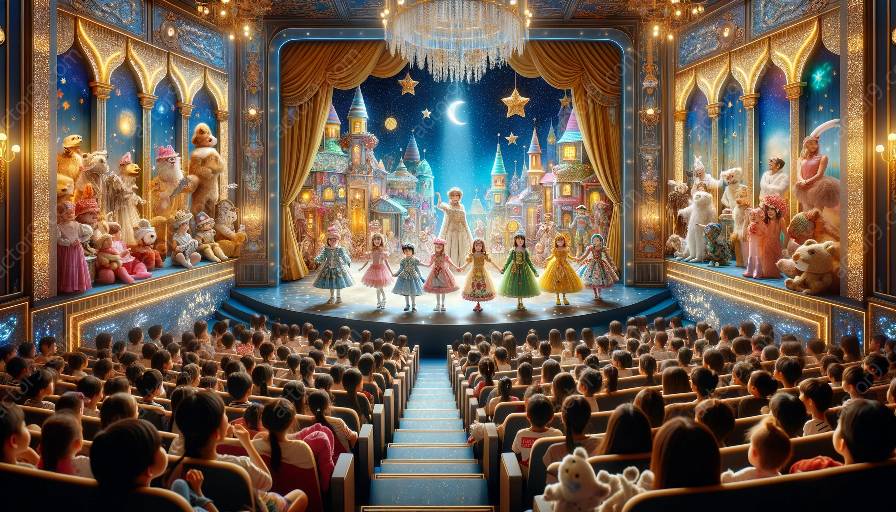As a designer creating theater experiences for young audiences, understanding child psychology is crucial in engaging and impacting young minds. The realm of acting & theater offers a unique opportunity to connect with children and influence their cognitive, emotional, and social development. In this topic cluster, we will explore the intersection of child psychology and theater for young audiences, delving into the profound impact of these experiences on children's holistic growth.
Understanding Child Psychology in the Context of Theater for Young Audiences
Child psychology encompasses various aspects of psychological development, including cognitive, emotional, and social processes. When designing theater experiences for young audiences, it's essential to consider these developmental stages and tailor performances to align with children's unique needs and abilities.
Children's cognitive development evolves rapidly, impacting their ability to understand and interpret the world around them. Incorporating storytelling, imaginative narratives, and interactive elements in theater experiences can stimulate children's cognitive functions, encouraging critical thinking, creativity, and problem-solving skills. By engaging with age-appropriate themes and characters, young audiences can expand their cognitive horizons and develop a deeper understanding of complex ideas.
Emotional engagement is another vital aspect of child psychology in theater for young audiences. Children experience a wide range of emotions, and theater provides a platform for them to explore and express their feelings in a safe and supportive environment. Designing performances that evoke empathy, compassion, and emotional resonance can help children navigate their emotions and cultivate empathy towards others, fostering emotional intelligence and social connectedness.
Impactful Design Strategies for Creating Theater Experiences for Children
Effective design strategies play a pivotal role in crafting compelling theater experiences for young audiences. Incorporating sensory elements, such as vibrant visuals, enchanting soundscapes, and tactile components, can captivate children's attention and enhance their sensory experiences. By integrating multisensory stimuli, designers can create immersive theatrical environments that stimulate children's senses and foster active engagement.
Furthermore, accessibility and inclusivity are integral considerations in designing theater experiences for young audiences. Ensuring that performances accommodate diverse audiences, including children with disabilities, linguistic differences, or sensory sensitivities, fosters an inclusive environment where all children can participate and enjoy the theatrical journey.
Empowering Children and Nurturing Creativity through Theater
Theater experiences for young audiences have the power to empower children and nurture their innate creativity. By providing opportunities for children to actively participate in the theatrical process, such as role-playing, storytelling workshops, or interactive elements within performances, designers can cultivate children's confidence, self-expression, and collaborative skills.
Moreover, theater experiences can inspire young audiences to explore their imagination, broaden their perspectives, and develop a lifelong appreciation for the arts. By igniting children's creativity and curiosity, theater becomes a catalyst for holistic development, shaping the next generation of theater enthusiasts and creative thinkers.
Conclusion
Designing theater experiences for young audiences is a multifaceted endeavor that intertwines the principles of child psychology with the artistry of acting & theater. By embracing an understanding of child psychology and leveraging impactful design strategies, creators can shape transformative theatrical experiences that leave a lasting impression on young minds. Through thoughtful storytelling, emotional engagement, and inclusive practices, theater for young audiences becomes a powerful medium for inspiring, educating, and empowering the next generation.















































